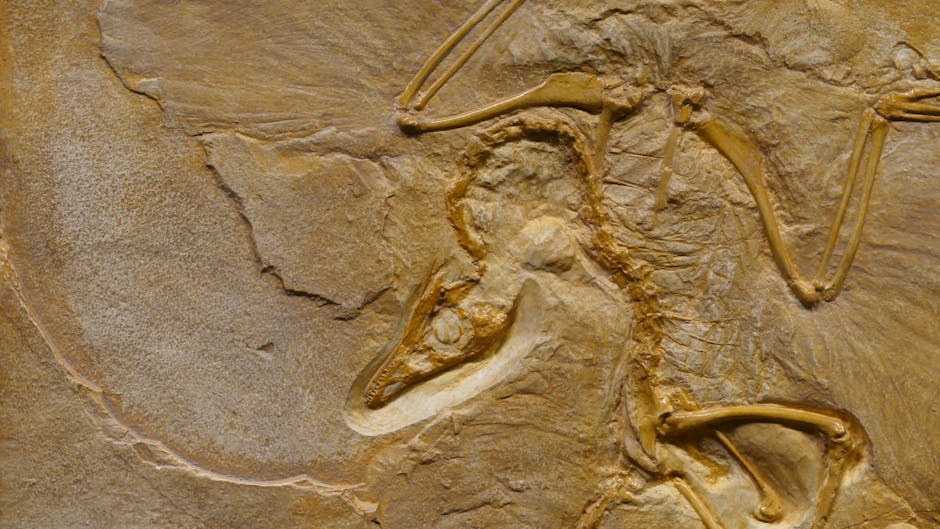The Evolving Canvas: Tracing Anime's Journey Through Its Iconic Openings (1960-2020)

The Evolving Canvas: Tracing Anime's Journey Through Its Iconic Openings (1960-2020)
Ah, anime! A vibrant tapestry woven with threads of imagination, cultural nuance, and breathtaking artistry. But beyond the compelling narratives and captivating characters, lies another layer of brilliance: the opening sequences. These aren't mere introductions; they're miniature masterpieces, encapsulating the essence of each series while serving as a time capsule of animation styles and musical trends. Let's embark on a delightful journey through the evolution of anime, using its opening themes as our guide, spanning from the nascent days of the 1960s to the dazzling diversity of 2020. Get ready to say "kawaii!" a lot.
Our quest begins with understanding that anime, while enjoying global popularity now, has roots deeply embedded in Japan's postwar cultural landscape. The early pioneers were exploring uncharted territories, experimenting with techniques and styles that would eventually blossom into the iconic aesthetic we know and love. Think of it as the raw clay from which stunning pottery is sculpted. These initial explorations were essential for establishing the foundational vocabulary of anime.
The Pioneering Era: 1960s – Black and White Dreams in Motion

The 1960s marked anime's humble beginnings. Limited by technology and budget, these early series were often characterized by simple animation, repetitive loops, and a focus on storytelling over visual spectacle. However, the seeds of innovation were definitely planted.
Think of shows like Astro Boy (1963), considered by many to be the grandfather of modern anime. The opening theme is undeniably catchy, a simple tune that captures the optimistic spirit of the series. The animation is basic, almost rudimentary by today's standards, but it's the earnestness and charm that shine through. It's a window into a simpler time, a reminder that even the most complex art forms have humble origins.
Other notable series from this era include Gigantor (1963) and Speed Racer (1967). While each has its unique charm, the openings share common threads: straightforward narratives, upbeat music, and a clear emphasis on action. The color palettes, often limited to black and white or simple shades, contribute to a nostalgic, almost grainy aesthetic. These weren't just cartoons; they were glimpses into a futuristic world, filled with robots, racing cars, and a sense of boundless possibility.
The music often felt militaristic with brass instruments and a strong sense of patriotism. It was a time when Japan was rebuilding and embracing the future. This is reflected in the sound design.
The Blooming 70s: Color Emerges and Genres Diversify

The 1970s witnessed a significant leap forward in animation technology and artistic expression. Color began to permeate the screen, adding depth and vibrancy to the visuals. Genres started to diversify, moving beyond science fiction and action to encompass themes of romance, fantasy, and slice-of-life. The openings reflected this burgeoning creativity.
Lupin the 3rd Part 1 (1971) is a perfect example. Its opening is stylish, jazzy, and downright cool. The animation, while still relatively simple, has a distinct visual flair. The jazzy music evokes a sense of adventure and intrigue, perfectly capturing the series' playful and sophisticated tone. It's an opening that instantly sets the mood, inviting you into a world of daring heists and charismatic characters.
The 70s also saw the rise of mecha anime, with series like Mazinger Z (1972) and Mobile Suit Gundam (1979). These openings were often bombastic and energetic, filled with images of giant robots battling monstrous foes. The music was equally epic, often featuring powerful vocals and driving rhythms. They weren't just opening themes; they were calls to arms, rallying viewers to join the fight for justice and freedom.
Let's not forget the impact of series like Candy Candy (1976). While markedly different from the action-oriented anime, its opening theme is equally memorable. The visuals are sweet and heartwarming, depicting Candy's journey through life with a sense of optimism and resilience. The music is gentle and melodic, evoking feelings of nostalgia and comfort. It's a testament to the diversity of anime even in its early stages.
The Glamorous 80s: Style and Substance Collide

The 1980s were a decade of excess and innovation, and anime was no exception. Animation became more fluid and detailed, character designs more elaborate, and music more experimental. Openings became increasingly sophisticated, incorporating visual effects, dynamic camerawork, and catchy pop tunes.
Macross (1982), later adapted as part of Robotech in the West, is a prime example. Its opening sequence is a visual spectacle, featuring transforming robots, intergalactic battles, and a memorable theme song. It perfectly blends action, romance, and science fiction, setting the stage for the series' complex and compelling narrative. The synth-heavy music screams 80s, but in the best possible way!
Dragon Ball (1986) also made its debut in the 80s, instantly becoming a global phenomenon. Its opening theme is energetic and uplifting, capturing the spirit of adventure and camaraderie that defines the series. The visuals are dynamic and action-packed, showcasing Goku's training and battles. It's an opening that gets your blood pumping and makes you want to shout along with the lyrics.
Consider also the influential Nausicaä of the Valley of the Wind (1984) movie which predates the establishment of Studio Ghibli, but carries its spirit. The opening is gentle and poignant, and visually captivating. It is a visual poem that draws you into the story of a young warrior protecting her world.
The 80s really solidified the idea of using music not just as a complement to the visuals, but as an integral part of the anime experience.
The Defining 90s: Genre Mastery and Global Reach

The 1990s brought further refinement to anime, with studios mastering established genres and pushing the boundaries of storytelling. Anime began to gain significant international recognition, influencing animation styles and pop culture around the world. Openings became even more crucial in attracting and retaining viewers.
Neon Genesis Evangelion (1995) is arguably one of the most influential anime series of all time. Its opening, "A Cruel Angel's Thesis," is iconic. The visuals are enigmatic and symbolic, hinting at the series' complex themes of existentialism, trauma, and human connection. The music is powerful and haunting, perfectly capturing the series' emotional depth. It's an opening that stays with you long after the episode ends.
Cowboy Bebop (1998) is another standout series from this era. Its opening, "Tank!," is a jazzy, high-energy masterpiece that perfectly captures the series' cool and sophisticated tone. The animation is stylish and dynamic, showcasing the crew of the Bebop and their intergalactic adventures. It's an opening that makes you want to snap your fingers and join the bounty hunters on their quest.
Sailor Moon (1992) also became a global phenomenon. Its opening is catchy and upbeat, reflecting the magical girl genre. The animation is colorful and sparkly, showcasing the Sailor Scouts and their transformations. It's an opening that is synonymous with magical girl anime.
In summary, the 90s were a pivotal period. Anime became more sophisticated, more experimental, and more globally recognized. Openings became a crucial part of the anime experience, serving as both introductions and artistic statements.
The Digital Age: 2000-2010 - Embracing Technology, Expanding Horizons

The advent of digital animation technologies revolutionized anime production in the 2000s. This led to more fluid animation, more complex visual effects, and a wider range of artistic styles. Openings became even more visually stunning and musically diverse, reflecting the growing diversity of anime itself.
Fullmetal Alchemist (2003) and its remake Fullmetal Alchemist: Brotherhood (2009) both feature memorable openings. Each version has its own distinct visual and musical style. They both succeed in capturing the series' themes of loss, redemption, and the search for truth. The music often features rock or pop-rock influences, reflecting the series' action-oriented nature.
Code Geass (2006) is known for its stylish animation and intense storyline. The openings mirror these traits and features J-Rock bands. The music is fast-paced and energetic, capturing the series' political intrigue and mecha action.
Consider the visually stunning openings of Bakemonogatari (2009) with it's unique art style. This one used experimental techniques and symbolism to create an unconventional but captivating opening. The music is just as eccentric as the visuals, featuring unconventional melodies and rhythms.
The 2000s saw a boom in anime production, with more studios, more series, and more creative freedom. Openings became a crucial tool for distinguishing one series from another, showcasing its unique style and tone.
The Modern Landscape: 2010-2020 - Diversity, Experimentation, and Global Fandom

The 2010s and 2020 witnessed an explosion of creativity in anime. Studios pushed the boundaries of animation, experimented with new genres, and embraced diverse storytelling styles. Anime became a global phenomenon, reaching audiences around the world through streaming services and social media. Openings became even more important in capturing the attention of a global audience.
Attack on Titan (2013) immediately captivated audiences with its dark and intense storyline. Its openings are epic and powerful, showcasing the series' themes of survival, despair, and rebellion. The music often features orchestral elements and soaring vocals, creating a sense of grandeur and urgency.
Your Name. (2016), while a movie, set a precedent with its opening that is often mirrored now. Its breathtaking visuals and heartwarming story made it a global success. It showcases the film's stunning animation and emotional depth.
Demon Slayer: Kimetsu no Yaiba (2019) became a global phenomenon with its beautiful animation and compelling story. The opening is high-energy and visually stunning, showcasing the series' dynamic action sequences and emotional character interactions.
Vinland Saga (2019) featured incredible music and art that blended the old school with the new. It showcased stunning animation and historical themes.
Ultimately, anime became more diverse, more experimental, and more accessible to a global audience. Openings reflect this evolution.
In the modern landscape, anime openings are more than just introductions; they are works of art that showcase the creativity and artistry of the medium.
Conclusion: A Continuing Evolution

From the simple black and white drawings of Astro Boy to the stunning digital animation of Demon Slayer, the evolution of anime openings reflects the evolution of anime itself. Each era has its own unique style, its own musical trends, and its own cultural influences. The openings aren't just entertainment; they are historical documents, capturing the spirit of each era and showcasing the boundless creativity of the medium.
As anime continues to evolve, we can only imagine what the future holds for its opening themes. One thing is certain: they will continue to be a vital part of the anime experience, captivating audiences with their visuals, their music, and their ability to encapsulate the essence of each series. So, the next time you watch an anime opening, take a moment to appreciate the artistry and the history behind it. It's a journey through time, a celebration of creativity, and a testament to the enduring power of anime.
What's your favorite opening of all time? Share your thoughts below! Let's keep the conversation going and celebrate the ever-evolving world of anime!
Post a Comment